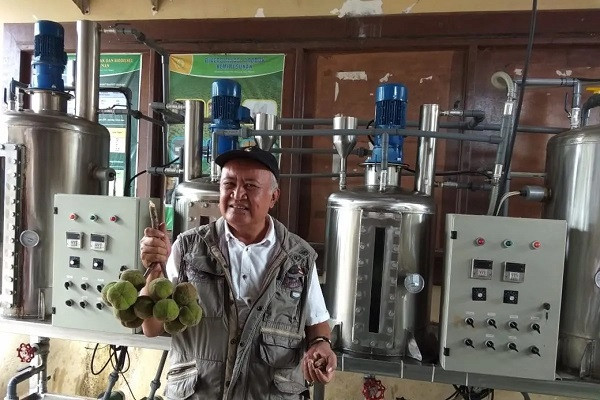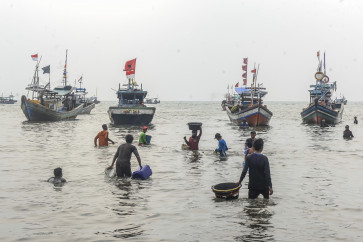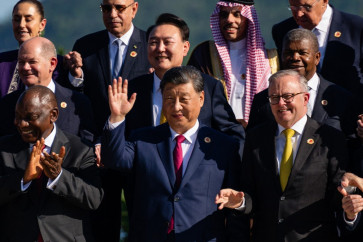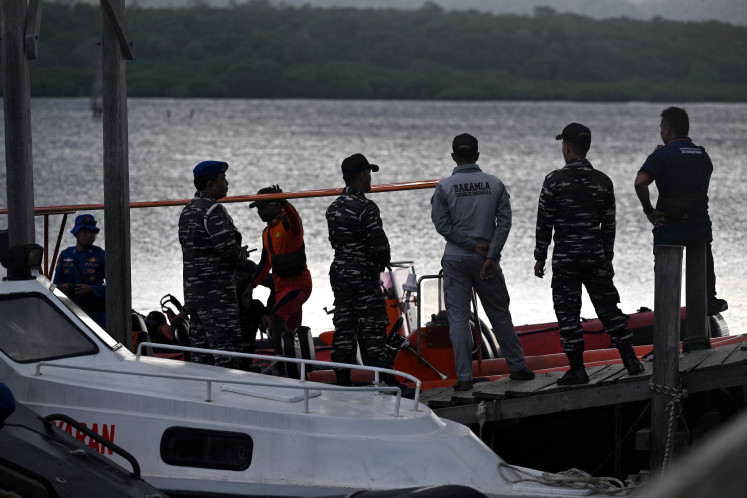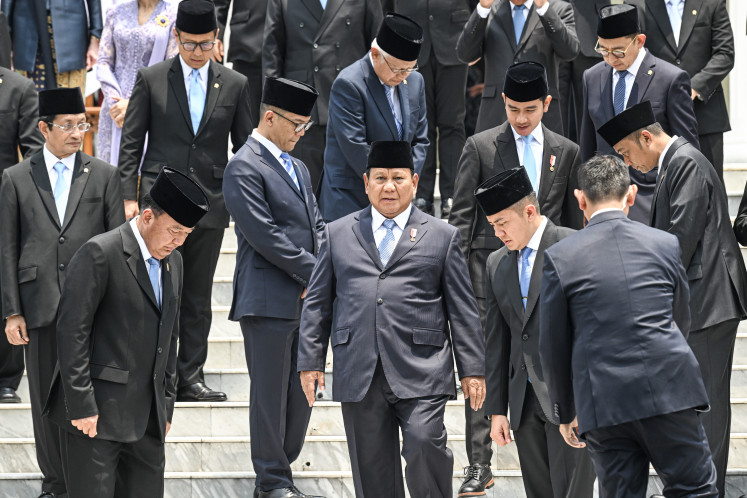Popular Reads
Top Results
Can't find what you're looking for?
View all search resultsPopular Reads
Top Results
Can't find what you're looking for?
View all search resultsCarbon trading is a catalyst for bioenergy development
The current carbon-trading mechanism may inadvertently exclude remote indigenous communities from participating in carbon trading even though they have safeguarded the forest for generations.
Change text size
Gift Premium Articles
to Anyone
T
he contemporary energy landscape demands a radical reimagining of Indonesia's bioenergy sector. The country's reliance on conventional feedstock like palm oil for biofuel production comes at a considerable cost.
As global concerns surrounding climate change and environmental degradation intensify, it is imperative that Indonesia seizes the opportunity to revolutionize its bioenergy practices. A potential solution lies in carbon trading, a mechanism that can incentivize the adoption of diversified and sustainable feedstock for bioenergy production.
The prevalent utilization of conventional feedstock in the country’s bioenergy sector has generated both economic benefits and ecological consequences. While this feedstock has contributed to energy production, its detrimental impacts on the environment are irrefutable.
Deforestation, habitat destruction and loss of biodiversity are direct outcomes of the expansion of oil palm plantations. Such practices not only exacerbate climate change but also threaten the very ecosystems that Indonesia seeks to protect. Additionally, the concentration of feedstock sources jeopardizes energy security, as any disruption in supply can lead to significant vulnerabilities.
Indonesia is endowed with an extraordinary bioenergy potential, boasting a capacity of 442 gigawatts, while only utilizing around 2 percent of its entire potential.
This latent capacity, however, remains largely untapped. To achieve energy resiliency, efficiency and sustainability, the nation must venture into uncharted territory by embracing diversified feedstock. Carbon trading emerges as a potent instrument that can steer this transformation.
According to the Environment and Forestry Ministry, the country's economic potential for carbon trading stands at about Rp 350 trillion (US$25 billion) between 2022 and 2026.
The existing carbon-trading framework in Indonesia holds the promise of becoming a catalyst for sustainable bioenergy development. Under this mechanism, bioenergy producers can earn carbon credits by reducing emissions and adopting environmentally friendly practices.
However, this system requires refinement to better incentivize the diversification of feedstock. This includes exploring the certification of non-edible crops like coastal plant nyamplung (Calophyllum inophyllum), jatropha and kemiri sunan (Aleurites trisperma) for their emission-reduction capabilities, thus allowing these alternative types of feedstock to enter the market and stimulate their cultivation for biofuel production.
Additionally, the emission-reduction capabilities of these alternative feedstock types over conventional options, including as a carbon sink, must be substantiated. Furthermore, the incorporation of waste-based biomass into the carbon-trading ecosystem can enhance the circular and sustainable bioenergy model, presenting an often-overlooked opportunity.
Examining successful cases demonstrates the viability of implementing diversified feedstock through carbon trading. Nyamplung agroforestry through Pandu Wijaya Negara in Yogyakarta and the Lengis Hijau Foundation in Bali exemplify community-driven initiatives that have embraced sustainable feedstock.
By integrating non-edible crops such as tamanu oil from nyamplung and waste-based through used cooking oil as biofuel into their bioenergy endeavors, these projects have not only contributed to emissions reduction but also generated economic opportunities at the local level. Such instances underscore the potential for scalable and replicable models that prioritize environmental integrity and community well-being.
To fully harness the potential of carbon trading for bioenergy diversification, a multifaceted approach is imperative.
First, comprehensive technical interventions are essential to facilitate the cultivation, processing and utilization of non-edible crops and waste-based biomass. Research and development initiatives, coupled with capacity-building programs, can empower local communities to actively participate in this transition.
Second, stringent yet adaptive regulations are paramount. Recognizing non-edible crops and waste-based biomass as eligible feedstock for carbon credit certification due to their carbon sink potential is pivotal for fostering market-driven change.
Lastly, the establishment of a robust market infrastructure for carbon credits is crucial. An accessible and efficient marketplace ensures that bioenergy producers can monetize their efforts and drive sustained momentum toward feedstock diversification.
The current carbon-trading mechanism may inadvertently exclude remote indigenous communities from participating in carbon trading even though they have safeguarded the forest for generations and we must address this concern with sensitivity.
The focus should not waver from the larger goal of sustainable bioenergy development. Efforts must be channeled into creating innovative solutions that enable broader participation, such as remote project aggregation, community partnerships or technology-driven inclusion.
Ultimately, the overarching aim remains the promotion of feedstock diversification and sustainability, which can significantly contribute to Indonesia's climate commitments.
In a world grappling with the complexities of climate change, Indonesia stands at a crossroads. The imperative to transition from conventional to diversified and sustainable bioenergy feedstock is clear.
Carbon trading has arisen as a strategic lever capable of steering this transformation. By refining the existing mechanism, nurturing technical interventions, enacting enabling regulations and fostering a vibrant market, Indonesia can emerge as a leader in sustainable bioenergy development.
The journey ahead is multifaceted, requiring unwavering commitment and collaborative efforts. Embracing the potential of carbon trading offers a path toward a greener, more resilient and prosperous future for Indonesia and the planet as a whole.
***
The writer is an analyst at Madani Berkelanjutan, a research organization focusing on sustainable environment. The views expressed are his own.

